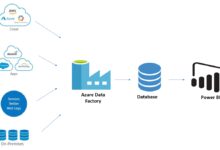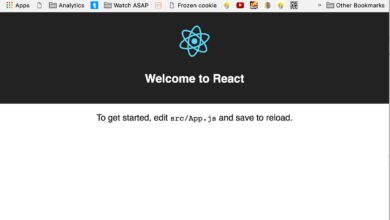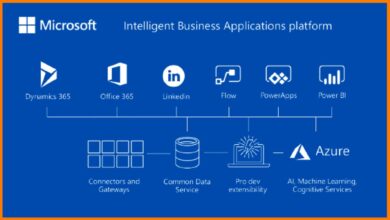Azure Portal: 7 Powerful Features You Must Master Today
Welcome to the ultimate guide on the Azure Portal! Whether you’re a beginner or a seasoned cloud professional, this comprehensive walkthrough will help you unlock the full potential of Microsoft’s cloud management hub with confidence and precision.
What Is the Azure Portal?

The Azure Portal is Microsoft’s web-based interface for managing cloud services and resources within the Azure ecosystem. It serves as a centralized dashboard where users can deploy, configure, monitor, and manage virtually every aspect of their cloud infrastructure. Think of it as the command center for your Azure environment — intuitive, scalable, and packed with tools to streamline cloud operations.
A Unified Management Interface
One of the standout aspects of the Azure Portal is its role as a single pane of glass for managing diverse cloud resources. From virtual machines and databases to AI models and networking components, everything can be accessed and controlled from one place. This unified experience reduces complexity and enhances operational efficiency.
- Access to over 200 Azure services
- Real-time monitoring and alerts
- Role-based access control (RBAC) integration
This centralization is especially valuable for IT teams managing hybrid or multi-cloud environments, where visibility and control are critical.
How It Compares to Other Cloud Dashboards
When compared to AWS Management Console or Google Cloud Console, the Azure Portal stands out for its deep integration with Microsoft 365, Active Directory, and Windows Server environments. For enterprises already invested in the Microsoft ecosystem, this seamless interoperability offers a significant advantage.
“The Azure Portal isn’t just a dashboard — it’s a productivity engine for cloud teams.” — Microsoft Cloud Architect, 2023
Additionally, its clean UI design, customizable dashboards, and strong support for automation via templates make it a favorite among DevOps engineers and cloud administrators alike.
Navigating the Azure Portal Interface
Upon logging into the Azure Portal, users are greeted with a clean, responsive interface designed for ease of use. Understanding its layout is the first step toward mastering cloud management.
Key Components of the Dashboard
The default dashboard includes widgets (called “tiles”) that display resource health, usage metrics, cost analysis, and quick-access buttons. These tiles are fully customizable, allowing users to build a personalized view tailored to their responsibilities.
- Navigation menu (hamburger icon) on the left
- Search bar at the top for quick service access
- Notification center for alerts and updates
- Subscription and cost tracking widgets
Users can pin frequently used resources or create multiple dashboards for different projects or teams, enhancing workflow efficiency.
Customizing Your Workspace
Personalization is a powerful feature of the Azure Portal. Administrators can save custom dashboards and share them across teams. For example, a DevOps team might have a dashboard focused on CI/CD pipelines, while a security team monitors compliance and threat detection logs.
To customize, simply click ‘Edit’ on any dashboard, drag and drop tiles, resize them, or add new ones from the gallery. You can even embed Power BI reports or Log Analytics queries directly into your view.
Pro Tip: Use dashboard templates to standardize views across departments and ensure consistent monitoring practices.
Managing Resources with the Azure Portal
At the heart of the Azure Portal is resource management. Whether you’re deploying a virtual machine, setting up a storage account, or configuring an app service, the portal provides guided workflows that simplify complex tasks.
Creating and Deploying Resources
To create a new resource, click the ‘+ Create a resource’ button. This opens the Azure Marketplace, where you can search for services like Virtual Machines, SQL Databases, or Azure Functions. Each service comes with a step-by-step configuration wizard that helps prevent errors and ensures best practices are followed.
- Select region, pricing tier, and networking options
- Configure security settings and identity access
- Review and deploy with a single click
Behind the scenes, the portal generates ARM (Azure Resource Manager) templates, which can be exported and reused for automation.
Organizing Resources with Resource Groups
Resource groups are logical containers that help organize related resources. For example, all components of a web application — the VM, database, and network — can be grouped together. This makes it easier to manage lifecycle, apply policies, and delete resources en masse when no longer needed.
Best practices suggest using naming conventions and tagging strategies (e.g., environment=production, department=finance) to enhance organization and cost tracking.
“A well-organized resource group structure is the foundation of scalable cloud management.”
Monitoring and Diagnostics in the Azure Portal
Effective cloud management isn’t just about deployment — it’s about visibility. The Azure Portal integrates powerful monitoring tools that help you maintain performance, detect issues, and optimize costs.
Using Azure Monitor
Azure Monitor is the central service for collecting, analyzing, and acting on telemetry data from your cloud and on-premises environments. Accessible directly from the portal, it provides insights into application performance, infrastructure health, and user behavior.
- View real-time metrics and logs
- Set up custom alerts based on thresholds
- Create workbooks for advanced visualizations
You can drill down into specific resources to see CPU usage, disk I/O, or network latency, helping you identify bottlenecks quickly.
Setting Up Alerts and Action Groups
The Azure Portal allows you to configure alerts that notify you via email, SMS, or webhook when predefined conditions are met. For example, you can set an alert if a VM’s CPU exceeds 90% for more than 5 minutes.
Action groups define who gets notified and how. They can include IT staff, DevOps teams, or even trigger automated runbooks in Azure Automation to self-heal issues.
Learn more about Azure Monitor setup in the official Microsoft documentation.
Security and Identity Management in the Azure Portal
Security is paramount in any cloud environment, and the Azure Portal provides robust tools to protect your data and infrastructure.
Role-Based Access Control (RBAC)
RBAC allows you to assign permissions based on job functions. Instead of giving everyone full access, you can grant granular roles like ‘Reader’, ‘Contributor’, or custom roles. This principle of least privilege minimizes the risk of accidental or malicious changes.
- Assign roles at subscription, resource group, or resource level
- Integrate with Azure AD for centralized identity management
- Review access with Azure AD Access Reviews
You can audit role assignments and monitor sign-in activity directly from the portal’s security dashboard.
Using Azure Security Center
Azure Security Center (now part of Microsoft Defender for Cloud) provides unified security management and advanced threat protection. From the Azure Portal, you can view security recommendations, detect vulnerabilities, and respond to threats in real time.
It continuously assesses your resources against security benchmarks and offers remediation steps — such as enabling disk encryption or configuring network security groups.
“Security isn’t a feature — it’s a continuous process, and the Azure Portal makes it actionable.”
Automation and Scripting via the Azure Portal
While the GUI is powerful, the real strength of the Azure Portal lies in its ability to bridge manual operations with automation.
Exporting ARM Templates
Every resource created through the portal can generate an ARM (Azure Resource Manager) template. These JSON-based templates describe the infrastructure as code, enabling repeatable, version-controlled deployments.
This is invaluable for DevOps teams practicing Infrastructure as Code (IaC). You can export a template after creating a resource, modify it, and deploy it using Azure CLI, PowerShell, or CI/CD pipelines.
- Promotes consistency across environments
- Reduces manual configuration errors
- Supports compliance and audit requirements
Using Azure Cloud Shell
The Azure Portal includes Cloud Shell — a browser-based command line interface with pre-installed tools like Azure CLI, PowerShell, and editors like VS Code.
You can launch Cloud Shell directly from the portal to run scripts, manage resources, or automate tasks without installing anything locally. It’s persistent (with a storage account) and accessible from any device.
Try running ‘az group list’ in Cloud Shell to see all your resource groups instantly.
Cost Management and Billing Insights
One of the most critical aspects of cloud computing is cost control. The Azure Portal provides comprehensive tools to track, analyze, and optimize your spending.
Using the Cost Management Dashboard
The Cost Management + Billing service, accessible from the portal, gives you real-time visibility into your Azure spending. You can view costs by service, region, resource group, or tag, helping you identify cost drivers.
- Set up budgets with alert thresholds
- Analyze trends over time
- Forecast future spending
For example, you can create a budget for your development team and receive an email when they reach 80% of their monthly limit.
Optimizing Spending with Recommendations
The portal also offers cost optimization suggestions, such as resizing underutilized VMs, reserving instances for long-term savings, or deleting unused disks.
These recommendations are powered by machine learning and historical usage patterns, making them highly accurate and actionable.
Microsoft reports that organizations using Azure Cost Management reduce cloud spend by up to 30% annually.
Advanced Tips and Best Practices for Azure Portal Users
Even experienced users can benefit from advanced techniques that enhance productivity and security.
Leveraging Quickstart Templates
The Azure Portal integrates with the Azure Quickstart Templates gallery, a community-driven repository of ARM templates for common scenarios.
Instead of building from scratch, you can deploy pre-configured solutions like a LAMP stack, Kubernetes cluster, or disaster recovery setup with just a few clicks.
Using Keyboard Shortcuts and Accessibility Features
The Azure Portal supports keyboard navigation and screen readers, making it accessible to users with disabilities. It also includes shortcuts like ‘Ctrl+/’ to open help, improving efficiency for power users.
- Use ‘F’ to focus the search bar
- Navigate menus with arrow keys
- Open notifications with ‘N’
These features are often overlooked but can significantly speed up daily operations.
What is the Azure Portal used for?
The Azure Portal is a web-based console used to manage Microsoft Azure cloud services. It allows users to deploy resources, monitor performance, manage security, control costs, and automate workflows through a graphical interface.
Is the Azure Portal free to use?
Yes, access to the Azure Portal itself is free. However, the resources you create and manage within it (like VMs, storage, and databases) incur costs based on usage. You can use the portal’s cost tools to monitor and control spending.
How do I secure my Azure Portal environment?
Secure your Azure Portal by enabling Multi-Factor Authentication (MFA), using Role-Based Access Control (RBAC), regularly reviewing access logs, and applying security policies through Microsoft Defender for Cloud.
Can I automate tasks in the Azure Portal?
Yes, the Azure Portal supports automation through ARM templates, Azure CLI, PowerShell, and Azure Automation. You can also use Cloud Shell to run scripts directly from the browser.
What are Azure Resource Groups?
Azure Resource Groups are logical containers that hold related resources for an Azure solution. They help organize, manage, and apply policies or permissions to a collection of resources as a single unit.
In conclusion, the Azure Portal is far more than just a dashboard — it’s a powerful, flexible, and secure gateway to the Microsoft cloud. From deploying virtual machines to monitoring performance, managing identities, and controlling costs, it offers everything you need to run a modern cloud infrastructure efficiently. By mastering its features — from basic navigation to advanced automation — you can unlock new levels of productivity and control. Whether you’re a developer, administrator, or decision-maker, investing time in learning the Azure Portal pays dividends in agility, security, and cost savings. Start exploring today, and take full command of your cloud journey.
Further Reading:









